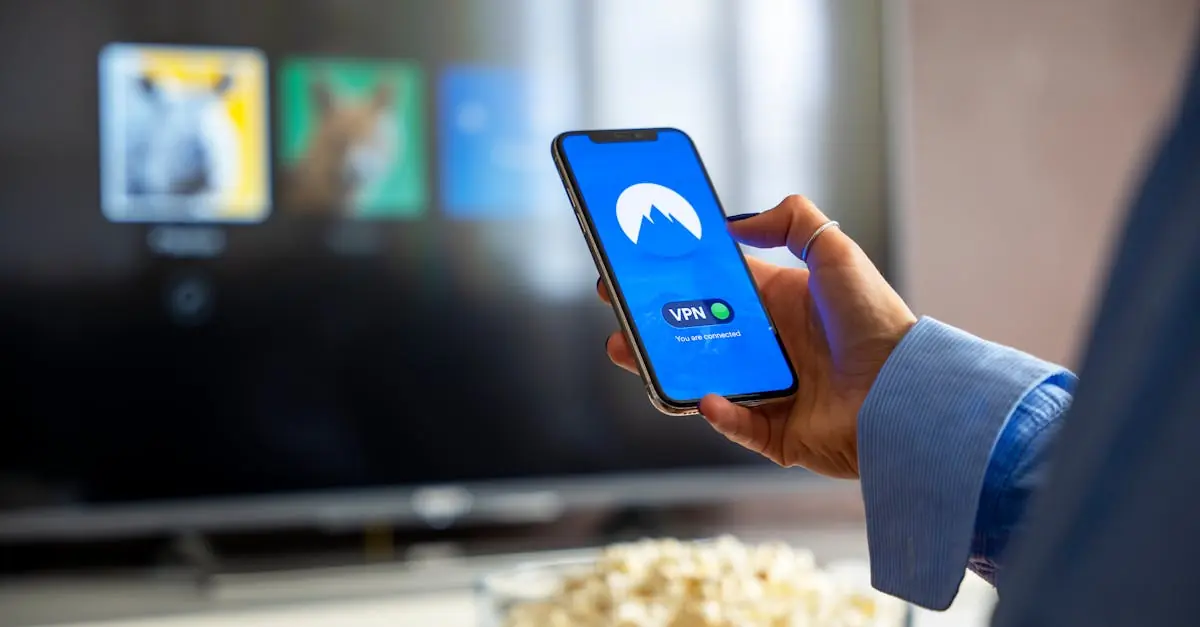In a world where even your toaster might be plotting against you, keeping your home secure has never been more crucial. Enter mobile home security apps—your trusty digital sidekicks ready to fend off intruders while you binge-watch your favorite series. These apps not only help protect your castle but also give you peace of mind, all from the palm of your hand.
Table of Contents
ToggleOverview of Mobile Home Security Apps
Mobile home security apps serve as vital tools for homeowners seeking to enhance safety. These applications provide real-time monitoring and control of security systems through smartphones. Users can receive alerts when unusual activity occurs, empowering them to act swiftly. Integrating seamlessly with various security devices, these apps allow users to manage cameras, alarms, and locks from one interface.
Most apps feature live video feeds, enabling users to monitor their homes remotely. Notifications for door openings, motion detection, or unexpected activities create a protocol for proactive security. Many apps include cloud storage options, ensuring users can access recorded footage whenever needed.
Additionally, some mobile security apps support integration with smart home devices, creating a comprehensive home automation system. Compatibility with devices such as smart lights or assistants expands user options for remote control and monitoring.
Users benefit from features like geo-fencing, where alerts trigger based on location, allowing for customizable security settings when entering or leaving home. Advanced encryption methods protect user data, instilling confidence in the security of their personal information.
Evaluating various apps reveals different functionalities, so choosing one that aligns with specific needs is crucial. Popular options in the market include Ring, Arlo, and ADT, each offering unique advantages. Ultimately, leveraging mobile home security apps significantly enhances home protection and peace of mind for homeowners.
Features to Look For
Mobile home security apps offer various features that enhance safety and usability. Users benefit significantly from specific functionality when choosing an app.
User-Friendly Interface
Simplicity matters when navigating security apps. An intuitive design ensures that users can access critical functions quickly without frustration. Clear icons and straightforward layouts allow for easy monitoring and control of security systems. Navigation should facilitate instant access to live feeds, alerts, and settings. A user-friendly app promotes seamless interaction and encourages consistent usage.
Real-Time Notifications
Timely alerts play a crucial role in home security. Real-time notifications inform users of important events like motion detection or door openings instantly. Customizable alert settings allow individuals to prioritize notifications based on their preferences, ensuring that relevant information surfaces promptly. The ability to receive alerts via push notifications or messages enhances responsiveness and situational awareness. Immediate updates empower users to take action if necessary.
Remote Access Capabilities
Control from anywhere heightens home security. Mobile apps with remote access capabilities enable users to monitor their property, adjust settings, and review footage on the go. Compatibility with various devices, such as smartphones and tablets, ensures flexibility in managing security systems. This feature especially benefits those who travel frequently or maintain vacation homes. Remote access not only fosters convenience but also instills confidence in home protection, regardless of the user’s location.
Top Mobile Home Security Apps
Mobile home security apps serve as indispensable tools in contemporary home protection strategies. Here are some of the most effective applications available.
App 1: Overview and Features
Ring offers comprehensive home security management through its user-friendly app. Users can access live video feeds, receive alerts for doorbell activity, and engage in two-way audio communication. The app also supports integration with Ring doorbells and cameras, allowing seamless monitoring of property. Additionally, customizable motion detection zones enhance security by minimizing false alarms.
App 2: Overview and Features
Arlo provides robust surveillance solutions through its intuitive application. This app allows users to manage various Arlo cameras, receive instant notifications, and view high-definition recordings. Features like night vision and automated animal detection enhance monitoring capabilities. Users can also set schedules for recording, ensuring tailored coverage of their property.
App 3: Overview and Features
ADT incorporates advanced technology into home security with its mobile app. The app provides control over ADT security systems, enabling users to arm or disarm the system remotely. Real-time notifications keep users informed of security events, while video monitoring capabilities allow for constant surveillance. Integration with smart devices adds further convenience to home management.
Pros and Cons of Mobile Home Security Apps
Mobile home security apps offer a mix of benefits and drawbacks that users should consider before incorporating them into their home security plans.
Advantages
Enhanced security provides peace of mind, allowing homeowners to monitor their properties from anywhere. Real-time alerts optimize responsiveness, ensuring users stay informed about unusual activities instantly. Customizable settings enable tailored security protocols to fit individual needs, including geo-fencing functionalities. Integration with smart home devices expands the scope of control, creating a cohesive security environment. User-friendly interfaces simplify navigation, allowing easy access to critical functions. Many apps offer cloud storage for recorded footage, providing an additional layer of protection and evidence. Features like live video feeds and two-way communication empower users to engage with visitors remotely, further enhancing home safety.
Disadvantages
Potential privacy concerns arise with mobile home security apps, as personal data might be collected and used by third parties. Connectivity issues can disrupt monitoring, creating gaps in security protocols during critical times. Dependence on technology increases vulnerability, especially if the device battery dies or suffers damage. Subscription fees sometimes come with advanced features, raising overall costs for users. Furthermore, the learning curve for navigating some apps can frustrate less tech-savvy individuals. Lastly, software vulnerabilities could expose systems to hacking, undermining the overall effectiveness of the security solution.
Conclusion
Mobile home security apps are transforming how homeowners protect their properties. By providing real-time monitoring and control from smartphones, these apps empower users to stay informed and proactive about their home security. With features like live video feeds and customizable alerts, individuals can tailor their security experience to fit their unique needs.
While there are advantages to using these applications, such as enhanced safety and convenience, it’s essential to remain aware of potential drawbacks. Evaluating different options and understanding their functionalities can help homeowners make informed decisions. Ultimately, adopting a mobile home security app can lead to greater peace of mind, ensuring that homes remain safe and secure in an ever-evolving landscape of threats.







